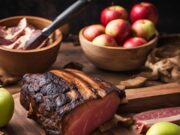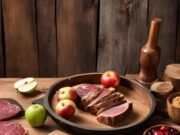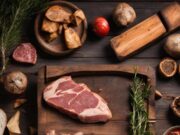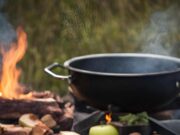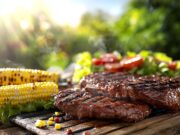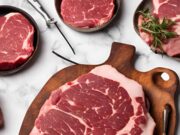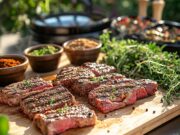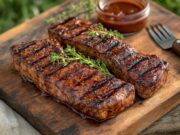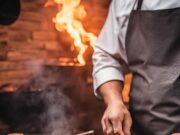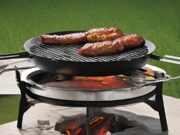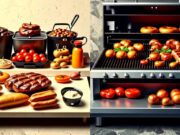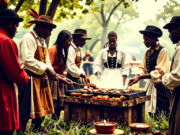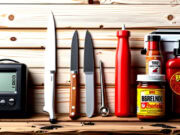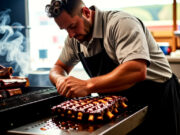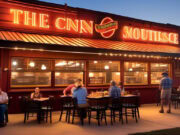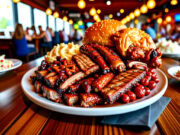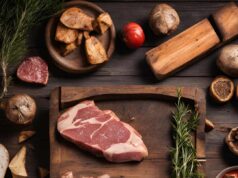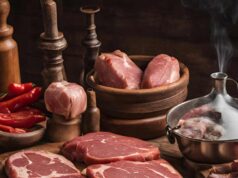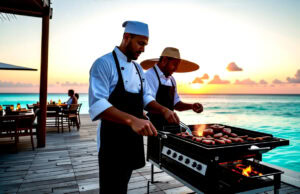- Key Takeaways:
- The Fundamentals of BBQ: Understanding the Basics
- Choosing the Right Grill: Types and Features
- Mastering the Two-Zone Fire: The Key to Versatile Cooking
- Enhancing Flavors: The Art of Marinades and Rubs
- Experimenting with Smoking: Techniques and Wood Choices
- Precision Cooking: The Role of Meat Thermometers
- Achieving the Perfect Sear: Grilling Techniques Explained
- Safety First: BBQ Precautions and Best Practices
- Tips for Hosting a Memorable Backyard BBQ
- Frequently Asked Questions
Grilling is not merely a matter of placing meat over an open flame; it is an art form that can be perfected with the right techniques.
In “Advanced BBQ Techniques: Elevate Your Grilling Game,” you will explore the essential skills needed to transform your backyard cookouts. This guide covers everything from understanding the fundamentals of BBQ to selecting the ideal grill, crafting flavorful marinades, and mastering smoking techniques.
It is filled with practical tips and expert advice to help you succeed.
Whether you are a novice or a seasoned grill master, you can expect to enhance your skills and impress your guests with unforgettable flavors.
Key Takeaways:
- Understand the basics of BBQ to lay a strong foundation for advanced techniques.
- Choose the right grill and create two cooking zones for versatility in grilling.
- Utilize marinades, rubs, and smoking techniques to enhance flavors and experiment with different wood choices.
The Fundamentals of BBQ: Understanding the Basics
To truly appreciate the art of BBQ, it is essential for you to understand the fundamentals that underpin successful grilling. This includes knowledge about meat quality, cooking temperatures, and food safety practices that ensure a delicious and safe grilling experience.
Selecting the right cut of meat is crucial, as different types and grades influence the flavor and texture of the final dish. A discerning eye for quality can make a significant difference.
Understanding various grilling methods, such as direct and indirect heat, is vital for mastering the cooking process, as these techniques allow for diverse flavor profiles and tender results.
Adhering to food safety guidelines, such as maintaining proper storage temperatures and avoiding cross-contamination, ensures that everyone enjoys a risk-free meal. By combining these foundational principles, you can elevate your BBQ skills and impress your guests.
Choosing the Right Grill: Types and Features
Choosing the right grill is a crucial step in your BBQ journey. Whether you prefer the convenience of a gas grill, which offers quick heat and easy temperature control, or the traditional smoky flavor achieved through charcoal grilling, each type presents unique features and benefits.
Gas grills are highly favored for their ease of use, allowing for immediate ignition and precise flame regulation. This makes them perfect for quick weeknight dinners or large gatherings. Conversely, charcoal grills deliver a distinct flavor profile that many barbecue enthusiasts appreciate, as the natural hardwood charcoal imparts a rich, smoky taste that enhances meats and vegetables alike. However, using charcoal may require more time and effort for fuel preparation and temperature management.
Additionally, considering essential grilling tools such as tongs, thermometers, and brushes, along with proper maintenance practices like regular cleaning and checking for leaks, can significantly impact your grilling experience. These practices are vital for helping aspiring grill masters elevate their outdoor cooking skills.
Mastering the Two-Zone Fire: The Key to Versatile Cooking
Mastering the two-zone fire technique is essential for versatile cooking on the grill. This approach allows you to create both direct and indirect heat zones, enhancing your grilling capabilities and enabling you to perfectly sear meats while also providing a space for slower cooking methods.
This method transforms a standard grilling experience into a culinary art, give the power toing you to manipulate heat zones strategically. By establishing a hot side for quick searing and a cooler side for gradually cooking larger cuts of meat or delicate items like vegetables and fish, the two-zone setup facilitates precise temperature control.
This balance not only helps you achieve those beautiful grill marks but also ensures that meats are cooked evenly throughout, preventing the frustrating scenario of charred exteriors and undercooked interiors. With this technique, you can effortlessly elevate a backyard barbecue to gourmet levels.
Enhancing Flavors: The Art of Marinades and Rubs
Enhancing the flavors of your grilled dishes through marinades and rubs is a skill that can significantly elevate your BBQ experience. These flavorful mixtures penetrate the meat, imparting unique flavor profiles that transform ordinary cuts into extraordinary meals.
By mastering this art, you can take your grilling to the next level and impress your guests with delicious, well-seasoned dishes.
Popular Marinade Recipes
For grilling enthusiasts seeking to experiment with flavors, consider these popular marinade recipes that enhance the taste of meats while reflecting various culinary traditions and techniques, such as the creamy yogurt marinade and the robust coffee rub.
These marinades provide an opportunity for creativity in the kitchen, allowing you to incorporate diverse ingredients like fresh herbs, citrus juices, and spicy elements that can transform an ordinary cut of meat into a flavor-packed dish. For example, the zesty lemon-garlic marinade adds brightness to chicken, while a teriyaki variation elevates the taste of salmon by combining sweetness with umami notes.
Each recipe is designed for specific meats, optimizing your grilling experience to ensure a succulent finish that pleases the palate. Whether you favor a tangy barbecue marinade or a bold chimichurri, these options will inspire both novice and seasoned grill masters alike.
Experimenting with Smoking: Techniques and Wood Choices
Experimenting with different smoking techniques and wood choices can significantly enhance your barbecue. Various types of wood chips, such as applewood, hickory, and mesquite, offer unique and flavorful smoky essences that can elevate the taste of your grilled meats.
Understanding Smoke Density and Flavor Profiles
Understanding smoke density is essential for achieving the desired flavor profiles in your BBQ. It influences not only the intensity of the smoky flavor but also how well it complements different types of meats during the cooking process.
The level of smoke density can vary based on your choice of wood, the smoking method you utilize, and even the temperature at which you cook the meat. For example, using dense hardwoods like hickory generates a robust smoke that may overshadow more delicate proteins, while fruitwoods such as apple or cherry provide a subtler smoke that enhances natural flavors without overwhelming them.
Additionally, various smoking techniques, such as hot smoking and cold smoking, further impact the flavor outcome. You can experiment with different combinations of wood types and methods to develop intricate flavor profiles, ensuring that the smoky aroma complements the inherent characteristics of the meat perfectly.
Precision Cooking: The Role of Meat Thermometers
Using a meat thermometer is essential for precision cooking, ensuring that your meats reach the ideal cooking temperature while also maintaining food safety. This is crucial for avoiding undercooked or overcooked dishes during your BBQ sessions.
Achieving the perfect doneness not only enhances the flavor and texture of the meat but also significantly reduces the risk of foodborne illnesses. Many grill enthusiasts may rely on instincts or timing alone; however, without the accuracy provided by a quality thermometer, it becomes difficult to guarantee that bacteria such as Salmonella or E. coli have been eliminated.
Investing in a reliable thermometer give the power tos both novice and seasoned cooks with the confidence needed for effective meal preparation. Consequently, you can enjoy perfectly cooked steaks, chicken, or pork that are safe to consume and sure to impress at any outdoor gathering.
Achieving the Perfect Sear: Grilling Techniques Explained
Achieving the perfect sear on your meats is a hallmark of successful grilling. It requires a combination of proper grilling techniques, precise timing, and a thorough understanding of the characteristics of different meat cuts to create a flavorful crust that locks in juices.
To master this culinary art, you should start with high-quality cuts of meat, as their fat content and grain structure significantly impact the final texture and flavor. Preheating the grill to the appropriate temperature is crucial; a hot cooking surface helps create that sought-after Maillard reaction. Timing is equally important; flipping the meat too soon can prevent a proper sear from forming.
Allowing the meat to rest after searing is essential, as it enables the juices to redistribute, ensuring a tender and juicy bite. Incorporating techniques like dry brining can also enhance flavor before grilling, leading to a more satisfying dining experience.
Safety First: BBQ Precautions and Best Practices
Safety must always be a top priority when engaging in BBQ. By implementing proper precautions and best practices, you not only protect yourself and your guests but also enhance your overall enjoyment of the grilling experience within the grilling community.
Tips for Hosting a Memorable Backyard BBQ
Hosting a memorable backyard BBQ necessitates careful planning and preparation to guarantee that your guests have an enjoyable cooking experience. This includes selecting the appropriate grilling tools and creating a welcoming atmosphere for all attendees.
Planning and Preparation
Effective planning and preparation are essential for a successful backyard BBQ. This involves selecting the right cuts of meat, marinating in advance, and ensuring that all necessary grilling techniques are accounted for ahead of time.
To start, it is crucial to choose high-quality cuts of meat, such as ribeye steak, chicken thighs, or pork ribs, as these selections will significantly enhance the flavor profile of your BBQ. Next, compile a shopping list that includes not only the meat but also marinades, spices, and side dish ingredients. This will help streamline the process and prevent any last-minute trips to the store.
It is advisable to marinate the meat several hours or even overnight to allow the flavors to fully penetrate. As the grilling date approaches, timing becomes critical; preheating the grill well in advance will ensure that the meat cooks evenly and achieves that perfectly charred finish everyone appreciates.
All of these thoughtful preparations contribute to a memorable gathering where delicious food takes center stage.
Frequently Asked Questions
What are some common advanced BBQ techniques to take your grilling game to the next level?
Some common advanced BBQ techniques include reverse searing, using a smoker, creating a two-zone fire, and using different types of wood for smoking.
How can I improve the flavor of my BBQ using advanced techniques?
You can improve the flavor of your BBQ by experimenting with different marinades, dry rubs, and sauces. You can also try using different types of wood for smoking to add a unique flavor to your meats.
What is reverse searing and how does it enhance the taste of BBQ?
Reverse searing involves cooking the meat at a low temperature first, then finishing it off with a quick sear on high heat. This helps to evenly cook the meat and creates a flavorful crust on the outside.
How can I use a smoker to elevate my BBQ game?
Using a smoker allows you to cook food at a low temperature for a longer period of time, which results in tender and flavorful meat. You can also experiment with different types of wood for smoking to add different flavors to your BBQ.
What are the benefits of creating a two-zone fire for BBQ?
A two-zone fire allows for both direct and indirect heat, which is useful for cooking different types of food. This technique helps to prevent overcooking and allows for more control over the cooking process.
What type of wood should I use for smoking BBQ?
The type of wood used for smoking can greatly impact the flavor of your BBQ. Some popular options include hickory, mesquite, and applewood. It’s important to choose a wood that pairs well with the type of meat you are cooking.


